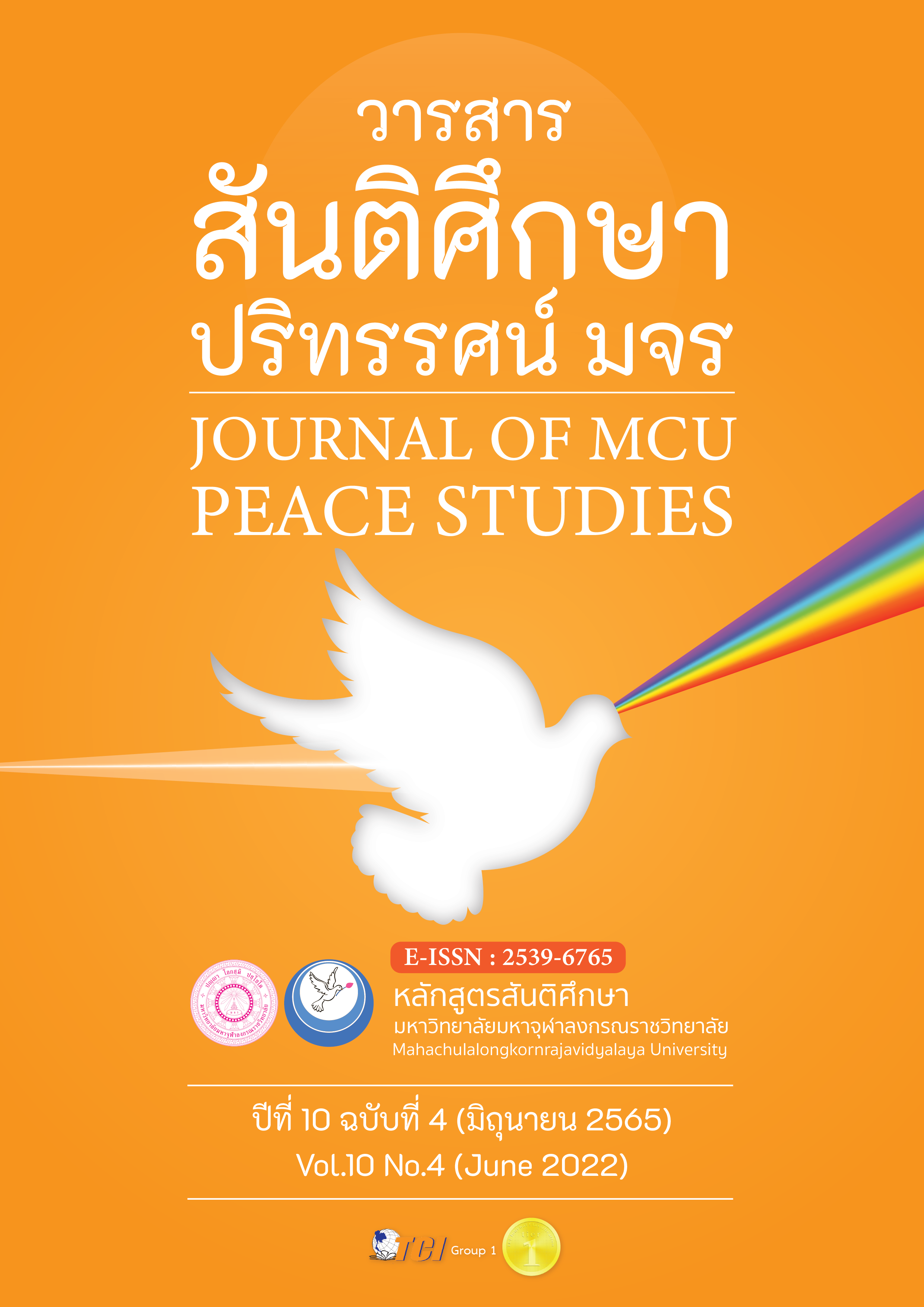อึมปี้: การวิเคราะห์ประวัติศาสตร์ วัฒนธรรม คุณค่าและภูมิปัญญา
Main Article Content
บทคัดย่อ
บทความวิจัยครั้งนี้มีวัตถุประสงค์ 1) เพื่อศึกษาประวัติศาสตร์ วัฒนธรรม ภูมิปัญญา 2) เพื่อวิเคราะห์คุณค่าภูมิปัญญา 3) เพื่อนำเสนอแนวทางการนำคุณค่าในภูมิปัญญาของกลุ่มชาติพันธุ์อึมปี้ในการพัฒนาชุมชน เป็นการวิจัยเชิงคุณภาพแนวคติชนวิทยา รวบรวมข้อมูลโดยการวิจัยเอกสาร การวิจัยภาคสนาม ประกอบด้วย การสัมภาษณ์เชิงลึก การสังเกต การบันทึก การประชุมกลุ่มย่อย จำนวน 30 คน ผู้ให้ข้อมูลสำคัญทั้งสิ้นจำนวน 55 คน การตรวจสอบข้อมูลแบบสามเส้าด้านข้อมูล การวิเคราะห์ข้อมูลด้วยการวิเคราะห์เนื้อหาและการอธิบายข้อมูลเชิงพรรณนา
ผลการวิจัยพบว่า 1) กลุ่มชาติพันธุ์อึมปี้อพยพลงมาจากแคว้นสิบสองปันนาในประเทศจีน ตั้งถิ่นฐานอยู่บ้านสะเกิน ตำบลยอด อำเภอสองแคว จังหวัดน่าน และหมู่ที่ 4, 8 ตำบลสวนเขื่อน อำเภอเมือง จังหวัดแพร่ มีชาวอึมปี้ (ก่อ) ในประเทศไทยมีประมาณ 1,642 คน ใช้ภาษาอึมปี้และมีประวัติศาสตร์การโยกย้ายและตั้งถิ่นฐานประมาณ 400 ปี 2) คุณค่า/ภูมิปัญญาของกลุ่มชาติพันธุ์อึมปี้สามารถแยกออกเป็น 6 ด้าน ดังนี้
1) ด้านเกษตรกรรม 2) ด้านอุตสาหกรรมหัตถกรรมและสถาปัตยกรรม 3) ด้านการจัดการทรัพยากรธรรมชาติและสิ่งแวดล้อม 4) ด้านภาษา 5) ด้านปรัชญาและศาสนา 6) ด้านโภชนาการ จากสิ่งที่บรรพบุรุษได้ปฏิบัติสืบต่อกันจนถึงปัจจุบันเป็นกุศโลบายสะท้อนให้เห็นถึงความสัมพันธ์ระหว่าง “คน” กับ “ธรรมชาติ” และ “คน” กับ “คุณธรรม” และ 3) แนวทางการสร้างศักยภาพและพัฒนาชุมชนผ่านการสงวนรักษามรดกทางวัฒนธรรมและเป็นการสร้างคุณค่าและแสดงออกถึงอัตลักษณ์ความสัมพันธ์ของคนในท้องถิ่นเพื่อการเรียนรู้ของชุมชน
อึมปี้โดยการถ่ายทอดและการขัดเกลาทางสังคมในรูปแบบ “พิพิธภัณฑ์ท้องถิ่น”
Article Details

อนุญาตภายใต้เงื่อนไข Creative Commons Attribution-NonCommercial-NoDerivatives 4.0 International License.
ทัศนะและความคิดเห็นที่ปรากฏในบทความในวารสาร ถือเป็นความรับผิดชอบของผู้เขียนบทความนั้น และไม่ถือเป็นทัศนะและความรับผิดชอบของกองบรรณาธิการ ยินยอมว่าบทความเป็นลิขสิทธิ์ของวารสาร
เอกสารอ้างอิง
Indigenous Peoples' Foundation for Education and Environment (IPF) (n.d.). KAW-UMPI. Development of community knowledge-based database system for empowering the most marginalized and vulnerable indigenous groups in Thailand. Get support from: (EUROPEAN UNION-EU) (International Work Group for Indigenous Affairs -IWGIA). Retrieved January 5, 2021, form https://kaw-umpi.thaiipportal.info
Kamyo, P. Markpulphol, N. and Miwanpia, R. (2020).Expectations of the Mpi Ethnic Group on the Desirable Local Political Leaders: A Case Study of Ban Dong Village in Phrae Provine. Journal of Humanities and Social Sciences Ubon Ratchathani University, 11(2), 32-49.
KhueanSi, T. (2012). Build a system of writing: successive destiny of Mpi Ban Dong language. Suan Khuean Subdistrict, Mueang District, Phrae Province, Bangkok: The Thailand Research Fund (TRF)
Koson, C. (2018). Management of Cultural Capital of Northern Thai Tribe. Journal of Administrative and Management, 6(2), 64-73.
Ngamprapasom, P. (2019).Conservation of Biodiversity and Local Cuisine under the Participation of Mpi at Ban Dong, Suankeun Sub–district, Maung District, Lampang Province. Journal of Cultural Approach, 19(35), 38-48.
Premsirat, S. (2004). The diversity in language and ethnicity : an unsolved problem or a valuable resource. Journal of Language and Culture (JLC), 23(1), 15-24.
Princess Maha Chakri Sirindhorn Anthropology Centre (Public Organisation)). (2020). Ethnic group: Mpi. Retrieved December 27, 2020, from https://www.sac.or.th/databases/ethnic-groups/ethnicGroups/10
Termpittayapaisit, A. (2010) "Thailand's Creative Economy" Deputy Secretary-General of the National Economic and Social Development Board. Office of the National Economic and Social Development Board Presented at an activity to shift the country's paradigm into a creative economy organized by the Ministry of Foreign Affairs in collaboration with the Center for Creative Design and Lecture at the Center for Creative Design on March 26, 2010.
THAI JUNIOR ENCYCLOPEDIA FOUNDATION. (n.d.). Ethnic meaning. by Hismajesty king Bhumibol Adulyadej The Great. Retrieved December 29, 2020, from http://saranukromthai.or.th/sub/book/book.php?book=23&chap=5&page=t23-5-infodetail01.html
Walliphodom, S. (2005). remark... the diversity of ethnic groups in Thailand. NAJUA: History of Architecture and Thai Architecture, 3, 4-7.


